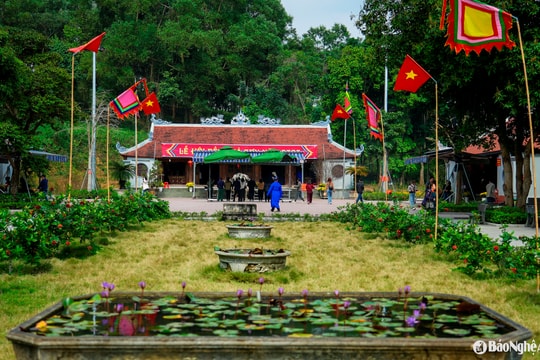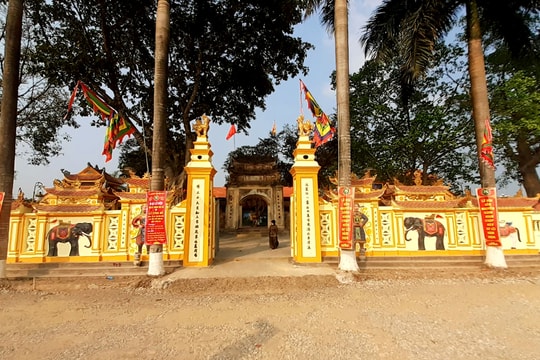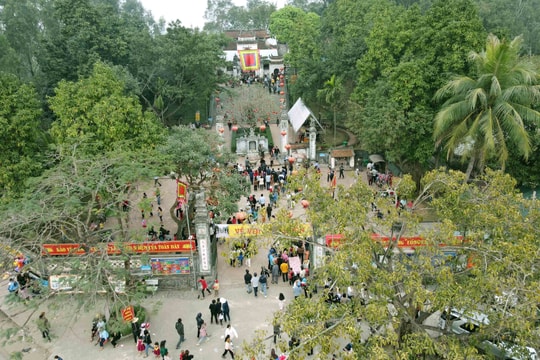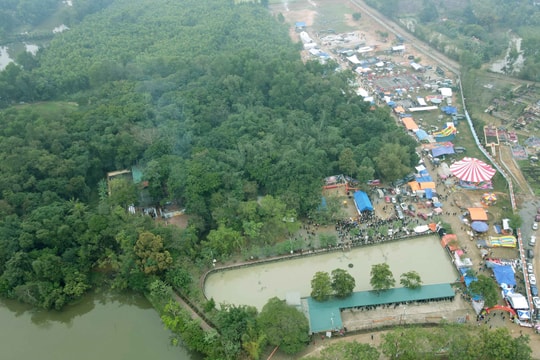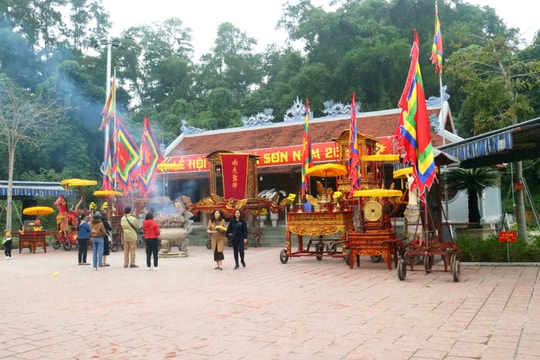The 'most sacred' temple in the center of Thai Hoa town
(Baonghean) - Despite its small size, Bau Sen Temple in Hoa Hieu Ward, in the center of Thai Hoa Town, still contains many interesting features. In addition to the legend of the temple's origin, we can also find ancient features rarely found in temples in the country.
In Thai Hoa town, there used to be the capital of the ancient Quy Chau prefecture, from the time when the prefecture's border still covered Nghia Dan district and Thai Hoa town today, and the local Thai Sam mandarins only had influence in the mountainous area from Quy Hop district up to the border area. Today, the Bay Market area next to Hieu bridge, which according to researcher Luong Viet Thoai in Chau Quang commune (Quy Hop), is the location of the Quy Chau prefecture's headquarters.
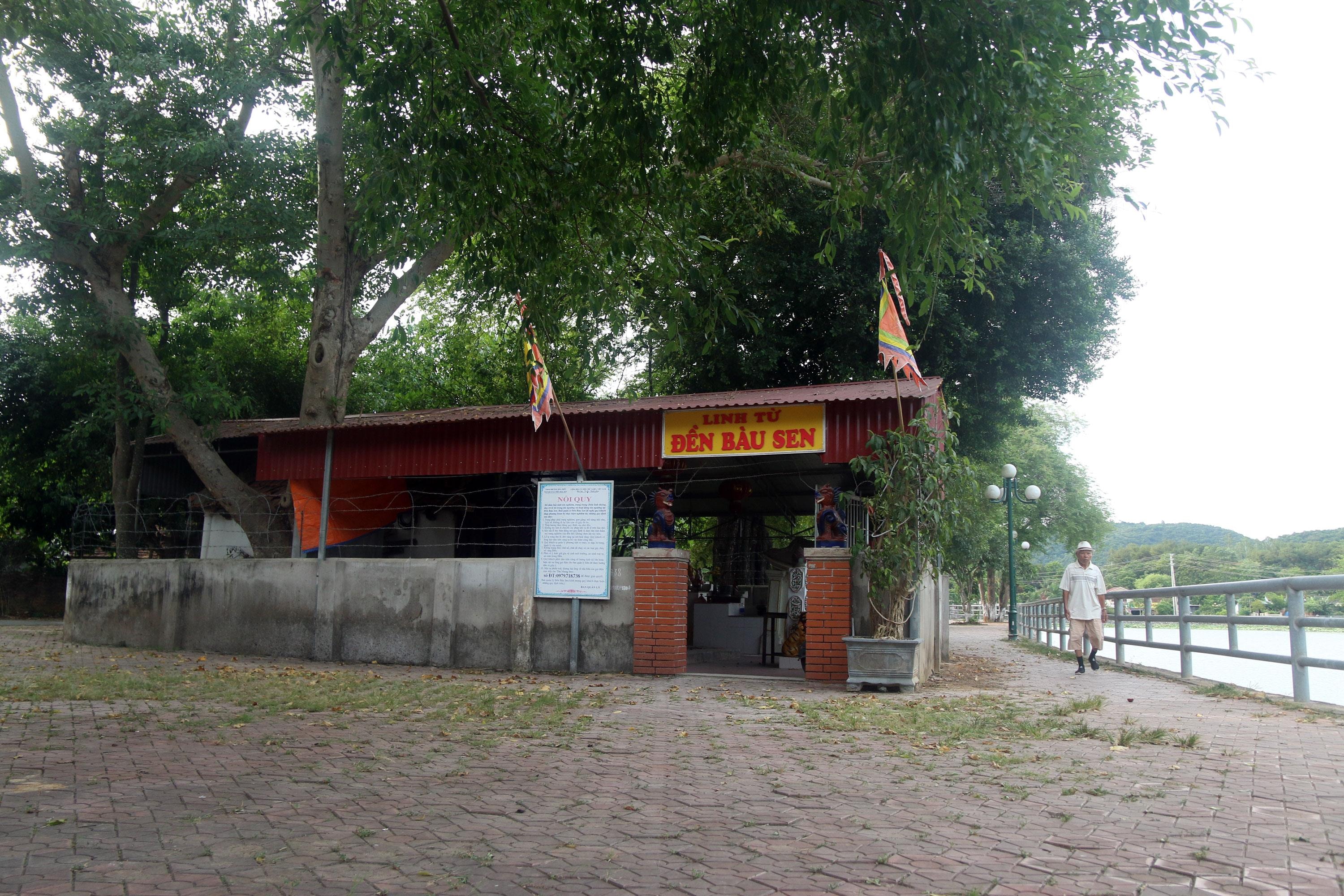 |
| Bau Sen Temple. Photo: Dao Tho |
However, no matter how hard we tried, we could not find any trace of the old district. In the memories of the elders, who were mainly from the lowlands and came to settle in the 1960s in Lui village, Nghia My commune, this land was quite wild at that time, as evidenced by the fact that near the town today there are still vast forests. Our field trips took us to Bau Sen area, Hoa Hieu ward.
Next to this lake shaped like a river, we came across a small temple, with an area of only a few hundred square meters, seemingly the only ancient feature left in the inner city of this 11-year-old town. The temple nestles modestly under an ancient fig tree next to the lake. Outside is a sign reading “Bau Sen Temple”, which according to local cultural officials is a favorite spiritual activity spot for town residents, so it is filled with incense smoke all year round. At the beginning of the month and on the full moon day, local residents gather to worship. Those are also the times when the small temple is busiest, on normal days, this place is quite quiet and almost always has only the old keeper on duty to take care of it.
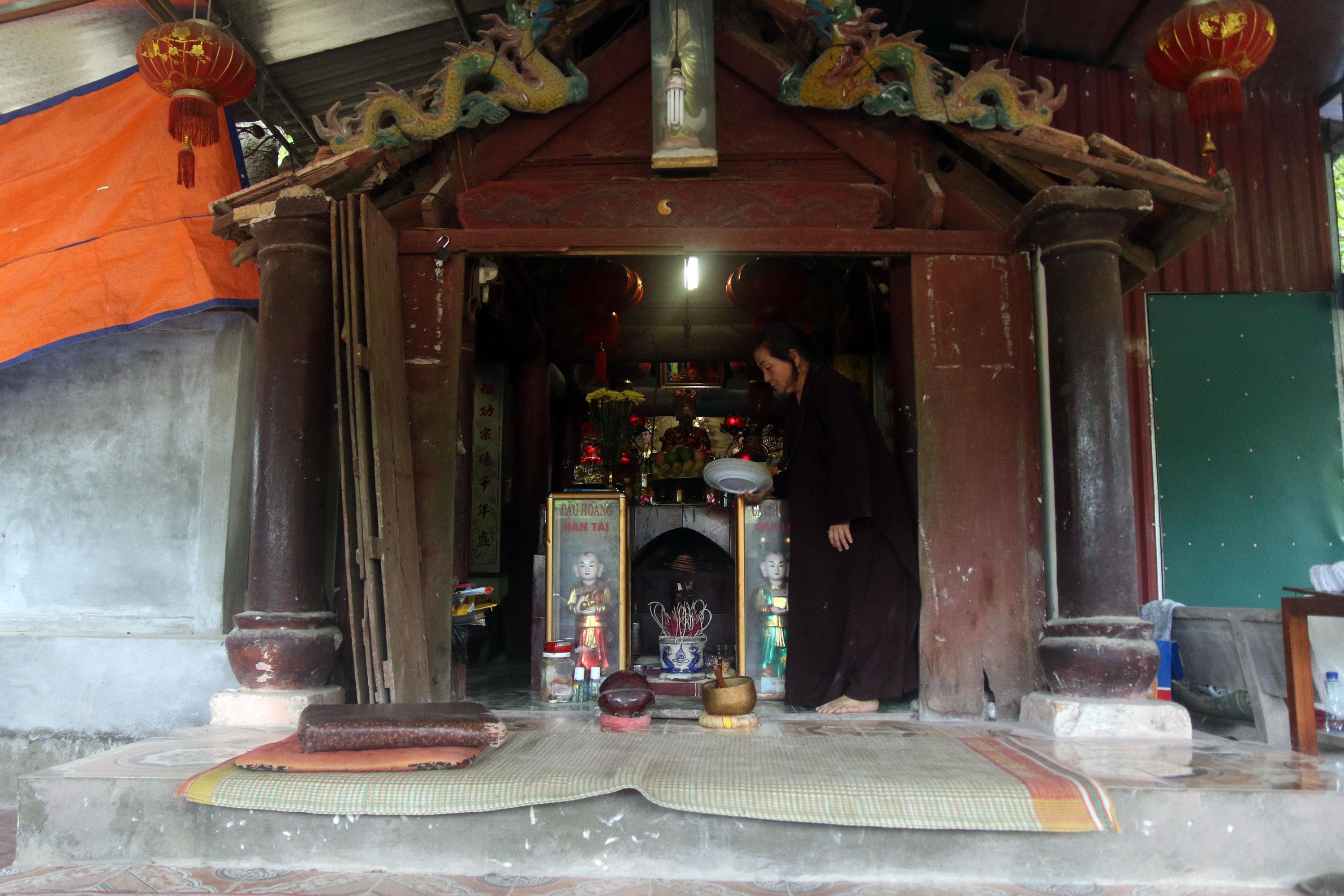 |
| The shrine of the temple. Photo: Dao Tho |
The keeper of Bau Sen temple - Mrs. Vu Thi Binh, is 68 years old this year, a retired teacher. Mrs. Binh said that Bau Sen temple worships the Third Holy Mother and is associated with an ancient legend that this place used to be a very prosperous village. People grew crops and planted rice along the river. One day, a white buffalo suddenly appeared in the area, which was actually the son of the Water King, and came to destroy the crops. All the rice and corn that were growing well were eaten by it. After much effort, the villagers finally caught the white buffalo and locked it up. Although they had announced it to the whole village, no one came to claim it, while no matter how much grass they brought, it ate it all. Having to feed the buffalo, which ate as much as "throwing vegetables into the river" for a long time, everyone was very upset. Finally, people discussed giving the buffalo meat to the villagers, but a widow and her son living by the big lake refused to accept the meat.
At night, the mother was warned in a dream that a great disaster was coming to the village and that if she wanted to survive, she had to leave. In the morning, she went around the village spreading the news, but no one believed her. Fearing that disaster would happen to her daughter, she took her and ran away. Before she could go far, there was a loud explosion and a landslide. When she turned around, the village was no longer visible. Everything had sunk into the lake.
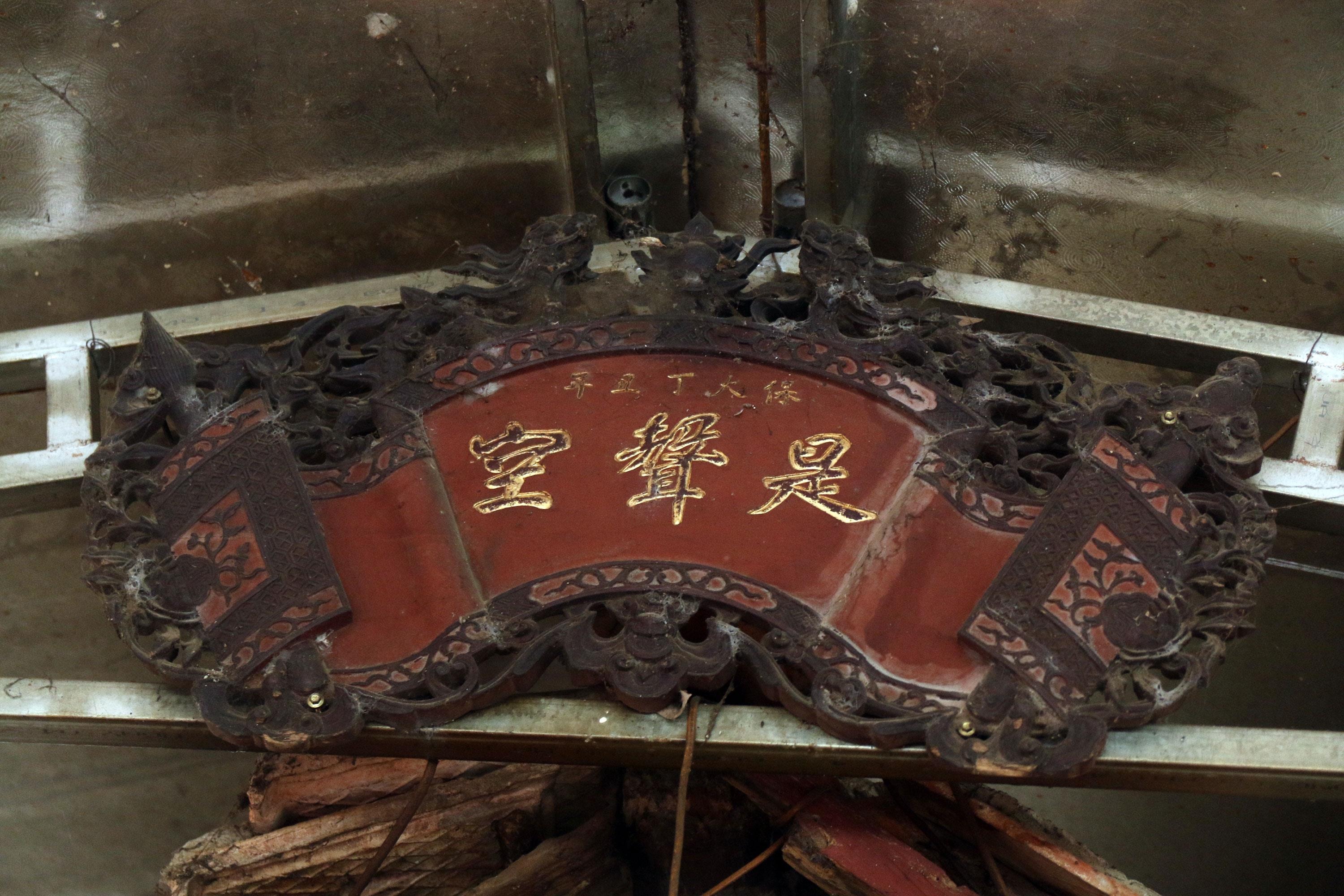 |
| The scroll "Thi thanh khong". Photo: Dao Tho |
Knowing that the village had been punished by the gods, the old woman took her daughter back to rebuild the house and set up a temple to worship the unfortunate people. However, the old woman's heart always remembered the villagers. The haunting death of the villagers made her mind restless, until one day, she threw herself into the lake to commit suicide. Not long after, the lake was covered with lotus flowers. That is how the local people explained the name Bau Sen, every summer the lake's surface would be dyed red, spreading a sweet fragrance. The lotus flowers were the incarnation of the old woman's kindness.
In front of the shrine is an ancient scroll with three Chinese characters “Thi thanh khong”. According to researcher Truong Duc Qua who used to work at the Vietnam Institute of Han Nom, such characters are quite rare in temples in the country. According to Mr. Tran Manh Cuong - a Han Nom officer working at the Nghe An Provincial Library, “Thi thanh khong” is a legend in Zen Buddhism. “Thi thanh khong” is sometimes called thanh khong nhu huyen. Buddhism believes that the ultimate doctrine is the dharma of emptiness and nothingness.
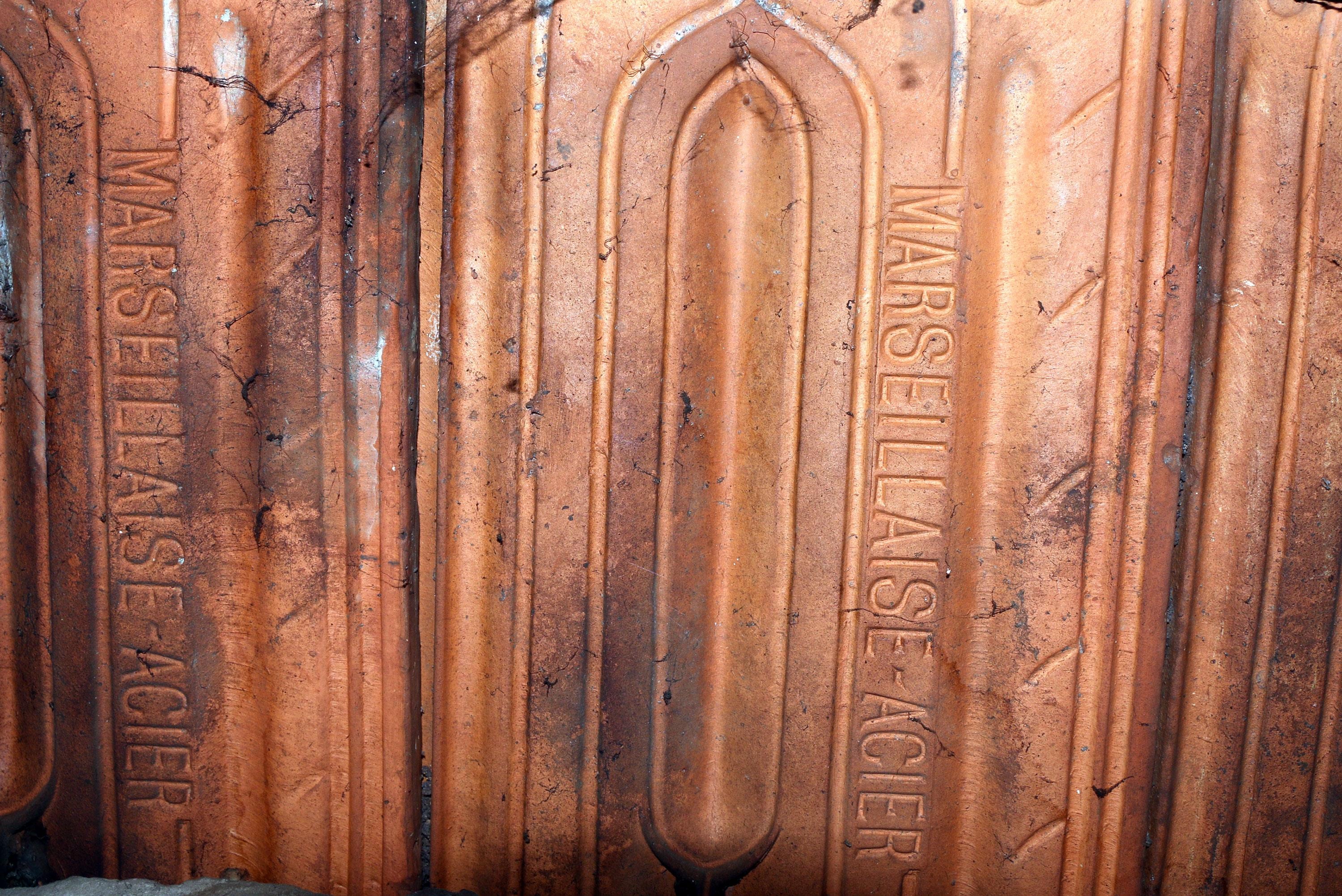 |
| Ancient tiles cover the temple roof. Photo: Dao Tho |
Inside the small shrine is a wooden plaque that reads “Toi Linh Tu”. According to researcher Truong Duc Qua, this is not the name of the temple but only indicates that this temple is extremely sacred. In addition, outside the temple there is a stone stele more than 1 meter high. However, the Chinese characters engraved on the stele are no longer clearly visible due to the effects of time, rain and sun...
While visiting the temple, the keeper showed us the ancient roof tiles of the temple, which were much larger than the locally produced tiles. Each tile was engraved with the words "marseillaise - acier". This type of tile originated from Marseille (France). Since the end of the 19th century, this type of tile was transported to Vietnam by the French to roof the Saigon Notre Dame Cathedral. This type of tile was also found in some ancient houses with French architecture in Quang Ninh province. We guessed that, after being used to roof the Saigon Notre Dame Cathedral, this type of tile continued to be transported from France to build many structures in Vietnam during the French colonial period, including Bau Sen Temple.

